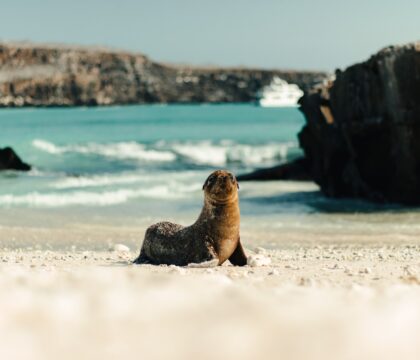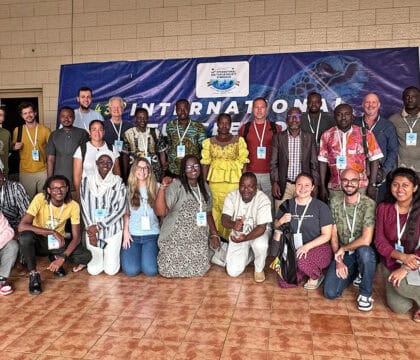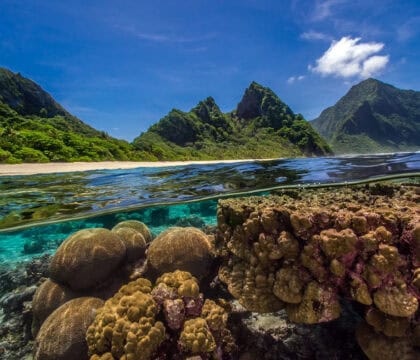September 10, 2025 • Field Notes
From the Field: Q&A with Oceanic Society Guide Ernesto on Exploring Nicaragua
Why Naturalists Matter
Immersive travel experiences can reshape worldviews and spark lifelong commitments to conserving the natural world. At Oceanic Society, eco-tourism is one of our most powerful tools for ocean conservation, and our expert naturalist guides are at the heart of this mission.
In our From the Field Q&A series, we introduce the naturalists who lead our nature expeditions—scientists, photographers, and conservationists who connect travelers with the ecosystems and cultures they love. This edition features Ernesto Ocampo, a Nicaraguan naturalist who has been guiding eco-tours and snorkeling expeditions in Nicaragua, Panama, and Costa Rica for more than a decade.
Meet Ernesto: Nicaragua Naturalist & Conservation Leader
Ernesto Ocampo was born in Nicaragua and has been leading eco-tours to Nicaragua, Panama, and Costa Rica as an expert naturalist with Oceanic Society since 2016. He has a deep history of promoting local conservation efforts in Central America through grassroots projects and leveraging eco-tourism to support these initiatives.
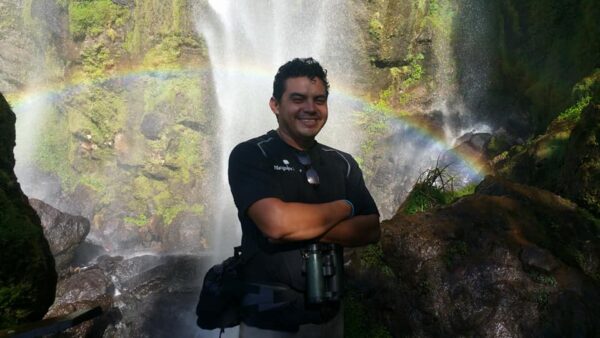
Connecting People and Nature with Eco-Tourism
Leading eco-tours allows Ernesto to combine his love of nature with lasting community impact. As a naturalist guide, he introduces travelers to the wild areas of Central America, where they snorkel vibrant coral reefs, hike volcanic landscapes, and visit rural villages, while showcasing how sustainable tourism supports conservation and uplifts local families.
In 2024, Ernesto was selected to attend the renowned Adventure Travel World Summit in Panama, which brought together tourism industry leaders from around the world to share insights on sustainable tourism, explore ways to create authentic experiences for travelers, and connect with new partners — including those from rural areas throughout Central America.
For Ernesto, there’s a special joy in introducing travelers to his home country, Nicaragua—its warm and welcoming people, stunning natural beauty above and below the waves, and its hidden gems.
Yet another passion of Ernesto’s is organizing community-led conservation efforts in Nicaragua, and he sees ecotourism as an important way to support these initiatives.
Spearheading Conservation at Agualí Biological Station
During the COVID-19 pandemic, Ernesto co-founded the Agualí Biological Station in Matagalpa, Nicaragua, which promotes community-led conservation, sustainable farming, and environmental education.
Based in the mountainous inland town of Matagalpa, he and his Agualí team host environmental education programs for youth, teaching them about the environment, providing hands-on conservation field work experience, and equipping them with leadership skills to foster a more environmentally sustainable society. Agualí also operates a sustainable farm that sells produce to local markets, is powered by renewable energy, and serves as a case study in how thoughtful architectural design can promote a harmonious balance between buildings and the natural environment.
The research station also welcomes visitors, with proceeds funding their conservation and research programs — showcasing how ethical tourism can be used to support the environment.
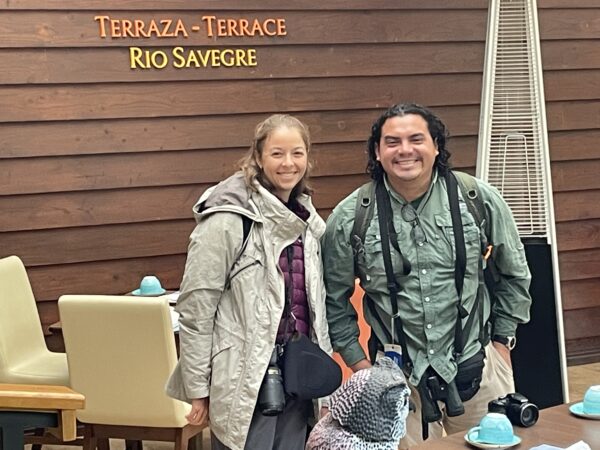
Q&A With Ernesto
Today, Ernesto spends much of his time as an ecotourism naturalist and a frontline conservationist with his nonprofit. We sat down with Ernesto for a Q&A to learn more about him!
Q: Where are you from, and what inspired you to be a naturalist?
A: I’m from Nicaragua—I was born and raised here. When I was 15, I realized I wanted to become a tour guide. That’s when I started learning more about nature and discovered how fascinating it was. I felt so inspired that I wanted to study Biology at university. Unfortunately, due to limited resources, I wasn’t able to pursue it as a major—Biology wasn’t offered in my hometown, and I couldn’t afford to live elsewhere. But that never stopped me from spending time in nature and surrounding myself with people who shared that same passion. Little by little, I kept learning, observing, and falling more in love with the vast and beautiful natural world.
Q: How long have you been guiding in Nicaragua?
A: I have been guiding in Nicaragua for 17 years.
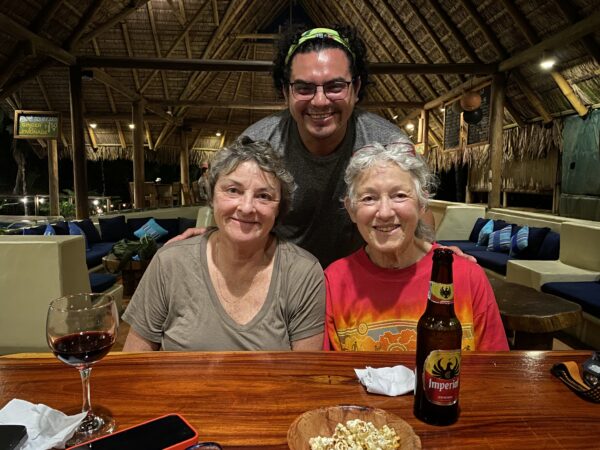
Q: What is your favorite aspect of Nicaragua that you like to share with guests?
A: I love being able to connect travelers with the natural wonders, rich culture, and heartfelt warmth of the Nicaraguan people. What makes Nicaragua truly special is its authenticity; nothing feels manufactured. Guests often find themselves surprised by how deeply they can connect with both the landscapes and the communities. It’s a place where adventure meets meaningful cultural encounters, whether it’s hiking a volcano, visiting a family-run farm, or sharing stories over a traditional meal. I take great joy in helping people experience the depth and beauty of this often-overlooked country.
Q: What surprises travelers most about Nicaragua?
A: Many guests arrive in Nicaragua carrying doubts shaped by headlines or warnings from others who have never visited. I often hear that friends or family advised them not to come—that it might be unsafe or risky. But by the end of their journey, their perspective has completely changed.
They’re amazed by how welcoming and warm Nicaraguans are, how safe they feel moving through cities and remote areas alike, and how rich and untouched the landscapes are. Volcanoes, lakes, pristine beaches, and mysterious cloud forests—all within reach and often without crowds. What surprises them most is that Nicaragua offers not just adventure, but an opportunity to connect deeply with people and place.
I often hear the same words at the end of the trip: “Ernesto, those people were so wrong—they have no idea what they’re missing.” And that’s what makes sharing Nicaragua so powerful.
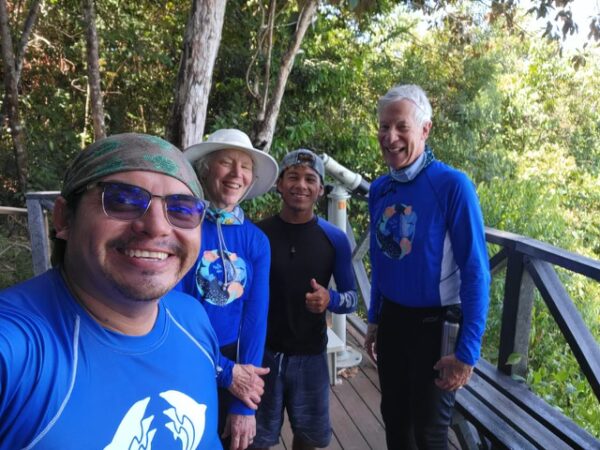
Q: What is your favorite memory from guiding trips in Nicaragua?
A: After so many years guiding in nature, one memory that truly stands out happened in 2015, when I discovered the wonders of coral reefs for the first time. Growing up in the mountains of Nicaragua, the ocean felt like a distant world, and vibrant coral ecosystems were completely outside my everyday experience.
That first time snorkeling over a healthy reef, seeing the explosion of color and marine life below me, felt like stepping into a living dream. It opened up a whole new dimension of nature for me—one that I’ve been exploring and learning about ever since. Now, every time I return to the sea, I carry that same sense of awe and curiosity, and I do my best to pass that feeling on to the travelers I guide.
Q: Did you have a defining moment in nature that changed how you see the world?
A: Yes—my defining moment didn’t happen deep in the forest or out at sea, but in the heart of a small rural community. Early in my career, I started working closely with local families to create tourism experiences rooted in their culture and way of life. What I witnessed was transformative—not just for travelers, but for the communities themselves.
I saw how impactful tourism can be when it’s done right. It became a bridge to opportunity, allowing families to share their traditions, generate income, and gain confidence in their own voices and knowledge. That experience showed me that guiding is not just about showing people beautiful places—it’s also about creating meaningful connections that uplift communities and preserve culture.
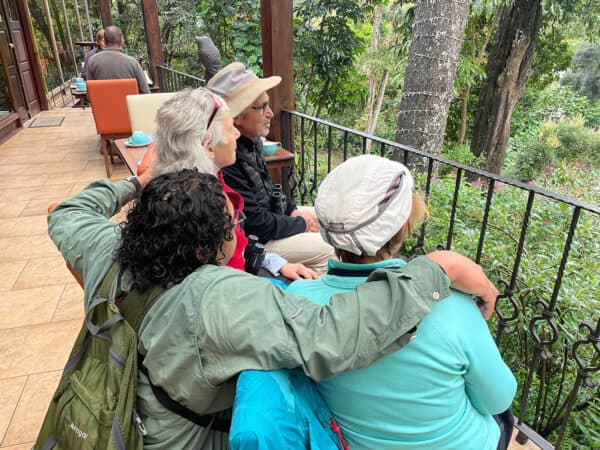
Our guide, Ernesto, and travelers look for wildlife at breakfast in the cloud forest. © Ashleigh Bandimere
Q: How do you see eco-tourism supporting the community and environment in Nicaragua?
A: In Nicaragua, I’ve seen firsthand how eco-tourism can become a powerful tool for both conservation and community empowerment. When designed thoughtfully, it brings direct benefits to local families—creating jobs, supporting small businesses, and encouraging younger generations to value and preserve their cultural and natural heritage.
At the same time, eco-tourism raises awareness about the importance of protecting ecosystems. It gives value to forests, rivers, and wildlife beyond extraction or destruction. When travelers come to experience a cloud forest or paddle through mangroves, they’re not just observing, they’re helping fund conservation efforts and reinforcing that these places matter.
→ In 2025, Oceanic Society’s State of the World’s Sea Turtles (SWOT) program provided a small grant to support SoS Nicaragua, a community-based nonprofit in Nicaragua, which helped them combat illegal endangered sea turtle poaching on Los Brasiles Island by educating children of parents who harvest sea turtle eggs, encouraging their participation in hatchling releases, and raising awareness about the importance of protecting sea turtles.
The proceeds of Oceanic Society’s expeditions partially fund SWOT small grants, and are another example of how thoughtful eco-tourism can channel money to support targeted conservation efforts that protect sea turtles and safeguard fragile ecosystems for future generations
Q: What do you hope guests take away from their experience?
A: Of course, I want guests to have a great time—to enjoy the landscapes, the people we meet, and the special places we explore together. But more than that, I hope the experience stays with them in a deeper way. I want them to walk away with a stronger connection to nature and a better understanding of how their choices—big or small—can contribute to conservation.
If guests leave feeling not just amazed, but also motivated to care more and do more for the planet, then I feel my work has real purpose.
Q: What are some ways guests can continue to support conservation efforts after they leave?
A: There are many simple but meaningful ways guests can stay involved even after the trip ends. One of the most powerful is to remain curious—keep learning about the places you visit and the challenges they face. Supporting organizations like Oceanic Society or local programs like Agualí in Nicaragua is another great way to contribute to long-term conservation and education efforts.
Another impactful action is to continue traveling—but to do so mindfully. Choosing responsible companies that prioritize sustainability and work closely with local communities helps ensure that your travel dollars are supporting positive change.
Guests can also make changes in their daily lives: reducing single-use plastics, making more conscious consumption choices, sharing what they’ve learned, and inspiring others to care. Every small action adds up. By staying engaged and traveling with intention, guests can become lifelong ambassadors for conservation.
→ For practical steps to reduce your impact on the ocean, check out our guide on 7 Ways to Reduce Ocean Plastic Pollution. This article covers key facts about ocean plastic pollution and provides several concrete solutions that anyone can take part in.
Inspired to Explore Nicaragua?
Ernesto is a true example for the ecotourism industry, and we hope that his story inspires curiosity in Nicaragua, its wondrous nature, and the many ways in which sustainable eco-tourism can be a powerful tool to support locally led conservation.
If Ernesto’s account of Nicaragua has moved you, consider joining him as he leads Oceanic Society expeditions to his home country. After all, there’s no better way to travel than with a local. You’ll visit Little Corn Island, a paradise that is reminiscent of the Caribbean before resorts dominated the coastlines. The 9-day eco-tour also visits the colonial town of Grenada and the surrounding cloud rainforests of Nicaragua’s mainland, complete with dormant volcanoes.
While guide assignments vary with availability, each trip is led by experienced naturalists like Ernesto and designed to immerse you in Nicaragua’s untouched natural wonders and welcoming culture.
Stay tuned for more conversations with Oceanic Society guides as we continue this Q&A series, From the Field.
→ Explore upcoming Nicaragua expedition departures and be sure to sign up for our newsletter to get expedition updates, travel inspiration, and ocean conservation insights delivered straight to your inbox.

